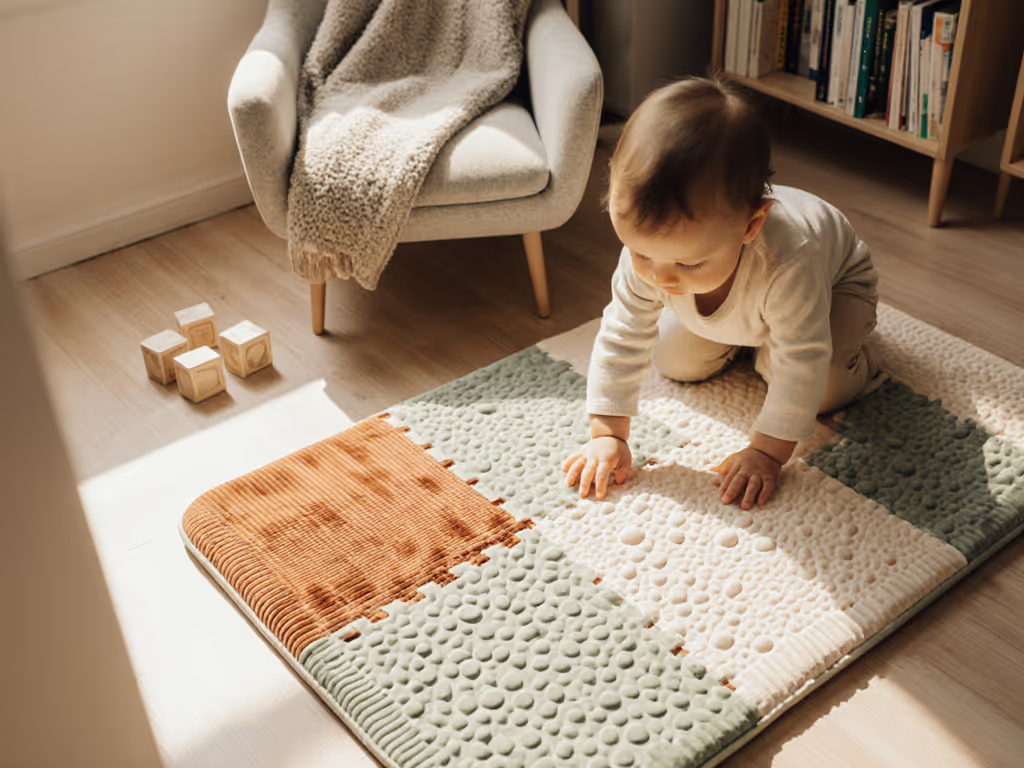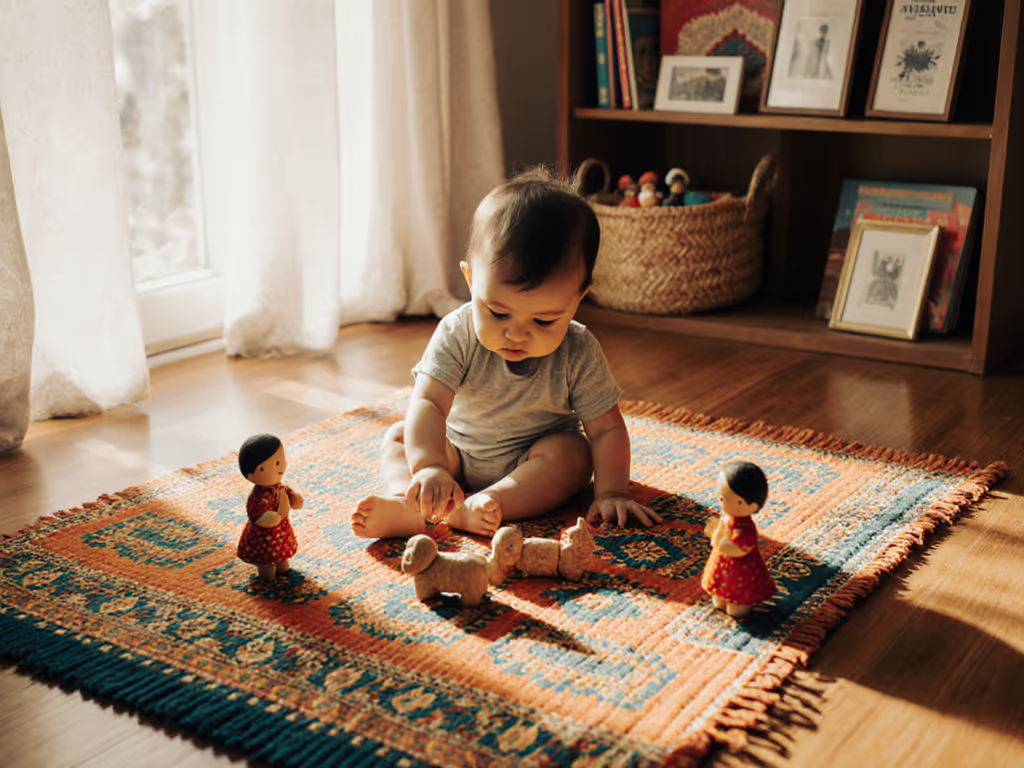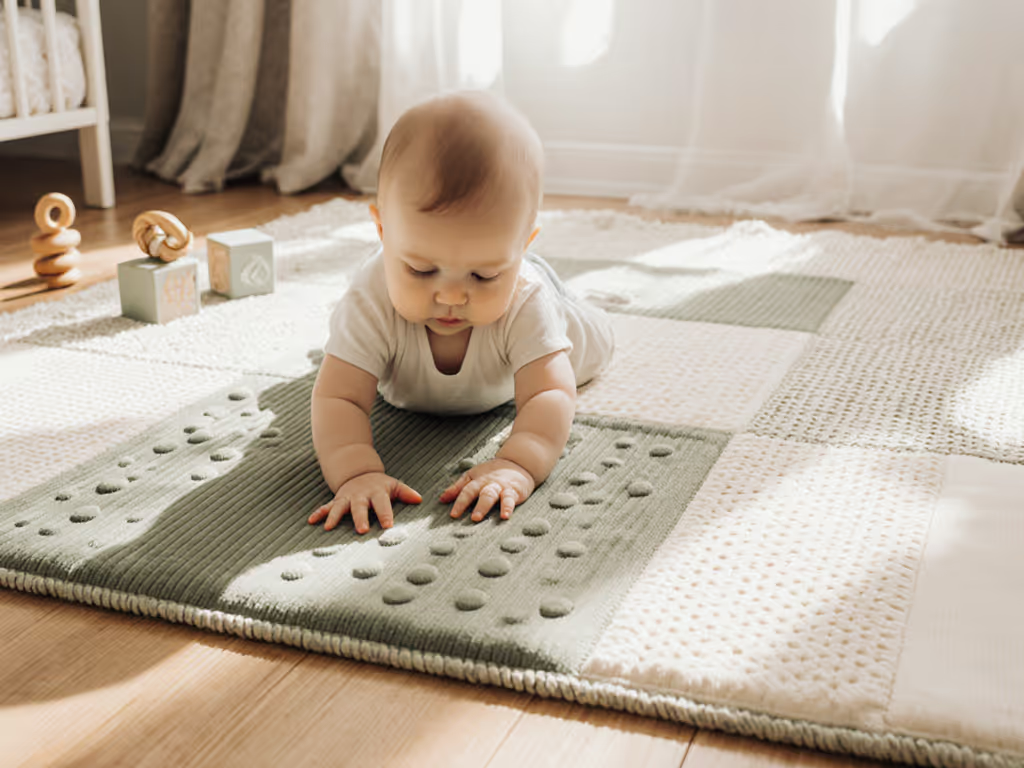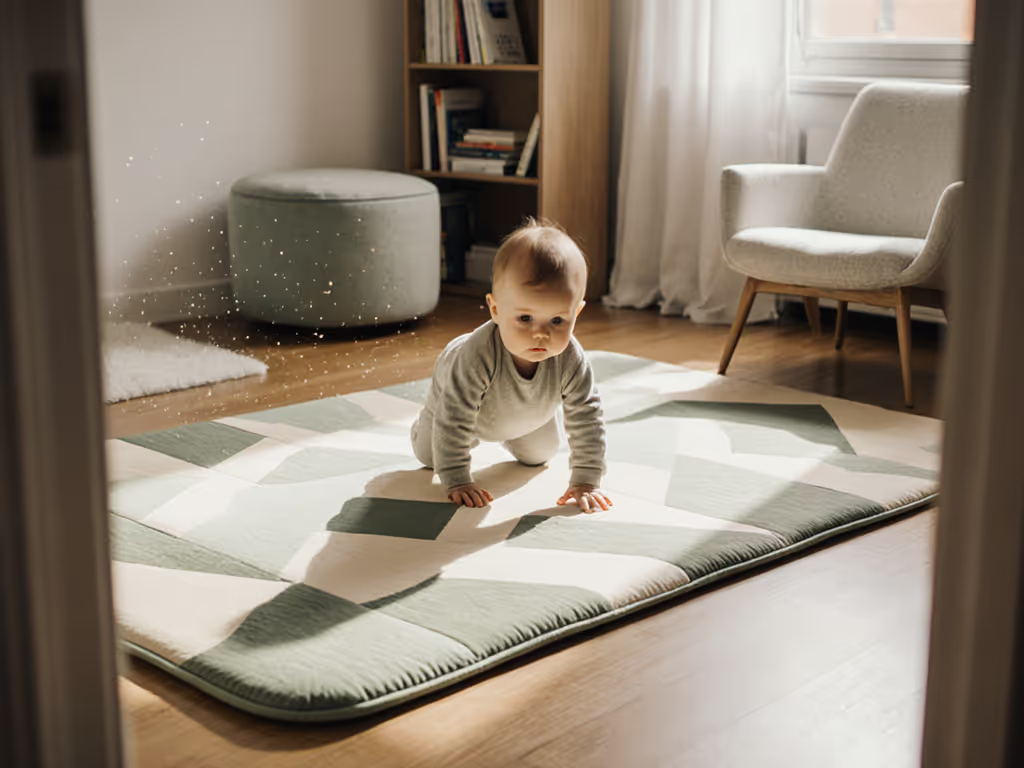
Build Cultural Identity: Play Mat Activities for Babies

As parents increasingly seek meaningful ways to nurture their child's cultural foundation, cultural play mat activities have emerged as a powerful, developmentally appropriate approach. Multicultural baby play isn't merely decorative, it's a research-backed method for building neural pathways while fostering identity. When I first noticed my daughter's fascination with the bold patterns on our play mat, I realized this wasn't just aesthetic appeal; she was engaging with visual elements that would become touchstones of her cultural identity. What began as casual tummy time evolved into intentional moments where we'd discuss patterns, colors, and sounds with cultural significance. Unknowns stay labeled.
What are 'Culturally Responsive Play' Activities on a Play Mat?
Culturally responsive play refers to intentionally designed activities that reflect children's cultural backgrounds and experiences, creating meaningful connections between home and learning environments. On a play mat, this manifests as:
- Pattern recognition with cultural significance: Rather than generic shapes, choose mats featuring traditional motifs (like Indigenous dot art, African Kente cloth patterns, or Asian textile designs)
- Heritage language integration: Naming colors and objects in ancestral languages during play
- Traditional baby games adapted for floor play: Incorporating elements from global traditions into familiar routines
These activities align with early childhood research showing that children develop strongest cognitive foundations when learning reflects their cultural context (NAEYC, 2022). On the play mat, this becomes tactile learning, reaching for a bell that chimes a traditional lullaby tone, or exploring textures that mimic natural elements from ancestral homelands.
How Can I Incorporate Heritage Language Through Play Mat Activities?
A heritage language play mat doesn't require specialized equipment, it is about intentional interaction. Evidence shows language exposure during sensory play strengthens retention (Harvard Center on the Developing Child):
- Pattern-based vocabulary building: As baby reaches for different elements, name them in your heritage language (sol for sun in Spanish, shams in Arabic)
- Sound mapping: Traditional instruments create distinctive sounds you can incorporate, for example, shake a small gourd rattle while saying maracas or ayoyo
- Rhythm integration: Pat your baby's hands to traditional clapping patterns while speaking simple phrases

Some educational placemats demonstrate how visual elements can support language exposure, though they are designed for older children. Adapt the concept by creating your own culturally significant visual references on your play mat.
What Traditional Baby Games Translate Well to Play Mat Activities?
Many cultures have developed developmentally appropriate baby games that work perfectly on play mats:
Indigenous Australian "Connection to Country" Practice
Lay baby on the mat outdoors (weather permitting) and gently name natural elements in local Indigenous language, 'yarru' (sun) in Yolngu Matha. This supports both language development and environmental awareness, similar to the Outdoor Blanket Time practice documented by Aussie Childcare Network.
West African Adinkra Symbol Recognition
Place small cloth squares with simplified Adinkra symbols (cultural symbols from Ghana) around baby. As they grasp each, name both the symbol and its meaning ('Gye Nyame' meaning 'Except for God') in your heritage language.
East Asian Sound Exploration
Use traditional wind chimes or gentle bells near the mat edge. As baby turns toward sounds, mimic traditional mouth sounds from your culture. Research shows this auditory differentiation strengthens early language skills (Journal of Child Language, 2023).
Evaluating Play Mats for Cultural Representation
When selecting play mats that support diverse representation play mat experiences, consider these evidence-based criteria:
- Material transparency: Look for third-party certifications (OEKO-TEX, Greenguard Gold) that verify safety claims, especially important since many culturally-themed mats use intense dyes
- Pattern authenticity: Research whether designs honor specific cultural traditions rather than generic 'ethnic' prints
- Multisensory integration: Mats combining textures, sounds, and visual elements create richer cultural experiences
I've learned through personal experience that the "new" smell of some mats isn't just novelty, it's often VOC off-gassing. When my daughter developed headaches during tummy time, I requested the manufacturer's test reports. Use our non-toxic play mat safety checklist to verify certifications, materials, and VOC reports before you buy. The mats that provided full material disclosures (including third-party VOC testing) became our go-to options. Transparency is a feature, not a vibe or hint.
Safety Considerations for Culturally-Themed Play Mats
Cultural authenticity shouldn't compromise safety. When evaluating mats:
Risk-Tier Framework for Materials
Low-risk: Natural rubber, food-grade silicone, GOTS-certified cotton
Medium-risk: Some TPU/EVA foams (verify phthalate-free certifications)
High-risk: PVC/vinyl without third-party testing (potential phthalates, formamide)
Always verify:
- Third-party test reports (not just manufacturer claims)
- Full ingredient disclosure (brands should list all dyes and treatments)
- Age-appropriate design (no small removable elements for infants)
Cleaning Considerations
Many culturally-themed mats feature intricate patterns that can trap residues. For stain removal and disinfection by material, see our play mat cleaning guide. Look for:
- Machine-washable options (verify with manufacturer)
- Wipe-clean surfaces for quick spot treatment
- Certifications indicating no toxic cleaning requirements
Making Multicultural Play Adaptable to Your Space
For urban parents with limited square footage, cultural play mat activities must earn their space: Choose dimensions that fit your home using our play mat size guide.
- Modular design: Consider mats with removable cultural elements you can rotate (e.g., different patterned squares)
- Reversible function: Choose mats with one side for cultural exploration, the other for neutral tummy time
- Size optimization: 4'x4' is sufficient for cultural activities through 18 months, larger mats often get crowded in small homes
The most successful culturally responsive play I've observed happens in homes where parents integrate cultural elements into existing routines rather than creating separate 'cultural time.' Pointing to the mat's pattern while singing a traditional lullaby during bedtime, or naming colors in heritage language during diaper changes, creates natural integration.
Beyond the Mat: Building Cultural Continuity
True cultural identity development extends beyond play mat time. Pair your mat activities with:
- Community connections: Find cultural festivals where baby can experience traditions in context
- Family storytelling: Record elders sharing traditional baby games
- Sensory extension: Create matching sensory bottles with colors and textures from your culture
Remember, cultural play isn't about perfection, it's about presence. Unknowns stay labeled, questions stay welcome, and every moment of connection matters more than flawless execution.
Further Exploration
For parents seeking to deepen their understanding of culturally responsive early childhood experiences:
- Read the National Association for the Education of Young Children's position statement on Advancing Equity in Early Childhood Education
- Explore the Center for the Study of Equity and Inclusion's resource library for age-appropriate cultural activities
- Connect with local cultural organizations, they often have parent-baby programs specifically designed for infants
By thoughtfully integrating cultural elements into foundational play experiences, we give our children something invaluable: the comfort of knowing who they are before they even have words for it.
Related Articles


Rolling Development Play Mat: Stable Surface Science

Sensory Texture Play Mat: How Textures Build Infant Tactile Skills

Motor Skill Play Mats: Space-Smart Baby Development Surfaces

